Baking Soda Cleaning Hacks: Unlock the sparkling potential of your home with this humble kitchen staple! Are you tired of harsh chemicals and expensive cleaning products cluttering your cabinets? I know I was! That’s why I dove headfirst into the world of baking soda, and let me tell you, the results have been nothing short of amazing.
For generations, baking soda has been a trusted household helper. From ancient Egyptians using it in their rudimentary soaps to our grandmothers relying on it for everything from deodorizing refrigerators to soothing bee stings, its versatility is undeniable. But beyond its historical uses, baking soda offers a powerful, eco-friendly alternative to many modern cleaning agents.
In today’s world, we’re all looking for ways to simplify our lives, save money, and reduce our environmental impact. That’s where these baking soda cleaning hacks come in. Imagine effortlessly tackling stubborn stains, banishing unpleasant odors, and restoring shine to your surfaces – all with a single, inexpensive ingredient. This article will reveal my favorite DIY tricks and tips, empowering you to transform your cleaning routine and create a healthier, happier home. Get ready to be amazed by the magic of baking soda!
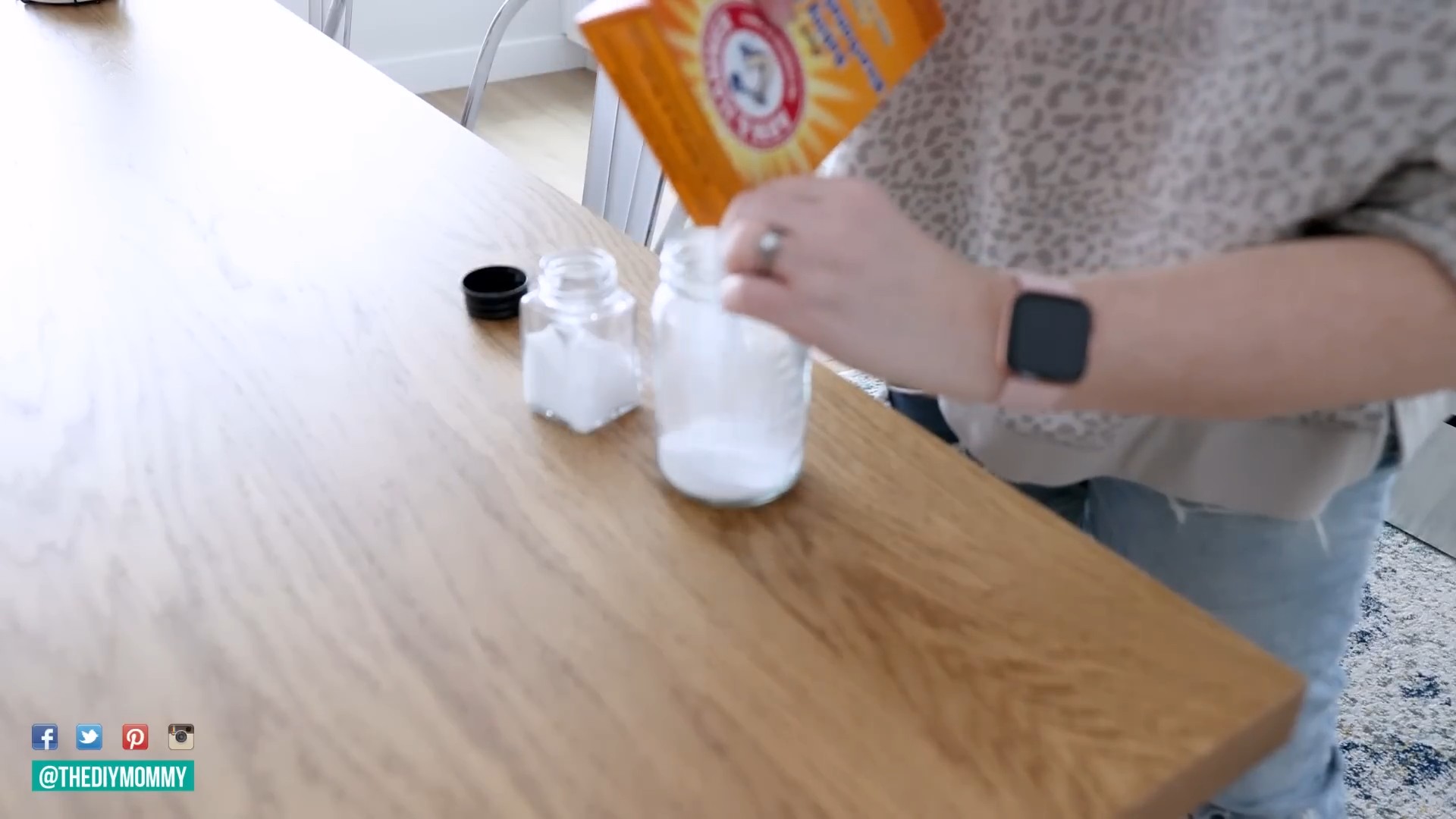
Unlocking the Cleaning Power of Baking Soda: DIY Hacks You Need to Know
Hey there, fellow cleaning enthusiasts! I’m always on the lookout for effective and affordable cleaning solutions, and baking soda has consistently proven to be a true champion. It’s a natural, non-toxic, and readily available ingredient that can tackle a surprising number of cleaning tasks around your home. Forget harsh chemicals and expensive cleaners – let’s dive into some amazing DIY baking soda cleaning hacks that will leave your house sparkling!
Baking Soda Basics: Why It Works
Before we jump into the hacks, let’s quickly understand why baking soda (sodium bicarbonate) is such a cleaning powerhouse. Its magic lies in its mild alkalinity and abrasive properties.
* Mild Abrasive: The fine particles of baking soda gently scrub away dirt, grime, and stains without scratching most surfaces.
* Deodorizer: Baking soda neutralizes odors instead of just masking them. It absorbs acidic and basic odor molecules, leaving your home smelling fresh.
* Alkaline Power: Baking soda can dissolve grease and dirt, making it easier to wipe away.
* Natural and Safe: Unlike many commercial cleaners, baking soda is non-toxic and safe for your family and pets.
Hack 1: Reviving Your Mattress
Our mattresses endure a lot, absorbing sweat, oils, and dust mites over time. This baking soda hack will freshen and deodorize your mattress, leaving you with a cleaner, more comfortable sleep.
What you’ll need:
* Baking soda
* Essential oil (optional, for added fragrance)
* Vacuum cleaner with upholstery attachment
* Sifter or strainer (optional, for even distribution)
Step-by-step instructions:
1. Strip the Bed: Remove all bedding, including sheets, blankets, and mattress protectors. Give them a good wash according to their care instructions.
2. Sprinkle Baking Soda: Generously sprinkle baking soda over the entire surface of your mattress. If you want a subtle fragrance, mix a few drops of your favorite essential oil (lavender, eucalyptus, or tea tree are great choices) with the baking soda before sprinkling. A sifter or strainer can help distribute the baking soda evenly.
3. Let it Sit: This is the crucial part! Allow the baking soda to sit on the mattress for at least 4-8 hours, or even better, overnight. This gives it ample time to absorb odors and moisture. The longer it sits, the more effective it will be.
4. Vacuum Thoroughly: Using the upholstery attachment of your vacuum cleaner, thoroughly vacuum the entire surface of the mattress. Make sure to get into all the nooks and crannies. Go over the mattress multiple times to ensure you remove all the baking soda residue.
5. Flip and Repeat (Optional): If you want to be extra thorough, flip the mattress and repeat steps 2-4 on the other side.
6. Remake the Bed: Once you’re satisfied that all the baking soda has been removed, remake your bed with fresh, clean linens.
Hack 2: Unclogging Drains Naturally
Clogged drains are a common household problem, and harsh chemical drain cleaners can be damaging to your pipes and the environment. This baking soda and vinegar hack is a natural and effective way to clear minor clogs.
What you’ll need:
* 1 cup baking soda
* 1 cup white vinegar
* Boiling water
Step-by-step instructions:
1. Clear Standing Water: If there’s standing water in the sink or tub, remove as much as possible with a cup or small container.
2. Pour in Baking Soda: Pour one cup of baking soda down the drain. Try to get it as far down the drain as possible.
3. Add Vinegar: Immediately follow the baking soda with one cup of white vinegar. You’ll notice a fizzing reaction – this is the baking soda and vinegar working together to break down the clog.
4. Let it Fizz: Allow the mixture to fizz and bubble for about 30 minutes. This gives the baking soda and vinegar time to dissolve grease, hair, and other debris.
5. Flush with Boiling Water: After 30 minutes, carefully pour a pot of boiling water down the drain. The hot water will help flush away the loosened clog.
6. Repeat if Necessary: If the drain is still clogged, repeat the process. For stubborn clogs, you may need to repeat the process several times.
7. Prevention: To prevent future clogs, flush your drains with hot water regularly and avoid pouring grease down the drain.
Hack 3: Cleaning and Deodorizing Your Refrigerator
A smelly refrigerator can be a real turn-off. Baking soda is a fantastic natural deodorizer that can absorb unpleasant odors and leave your fridge smelling fresh.
What you’ll need:
* Baking soda
* Warm water
* Clean cloth or sponge
Step-by-step instructions:
1. Remove Food: Take everything out of your refrigerator, including shelves and drawers. This will give you full access to all surfaces.
2. Make a Baking Soda Paste: Mix a few tablespoons of baking soda with enough warm water to form a paste.
3. Clean Interior Surfaces: Use the baking soda paste and a clean cloth or sponge to scrub all interior surfaces of the refrigerator, including the walls, shelves, drawers, and door seals. Pay special attention to areas with spills or stains.
4. Rinse with Clean Water: Rinse all surfaces with clean water to remove any baking soda residue.
5. Dry Thoroughly: Dry all surfaces with a clean towel.
6. Deodorize: Place an open box or container of baking soda in the refrigerator to absorb odors. Replace the baking soda every month or two for optimal freshness.
7. Return Food: Once the refrigerator is clean and dry, return the food items.
Hack 4: Brightening Laundry and Removing Stains
Baking soda can be a great addition to your laundry routine, helping to brighten whites, remove stains, and deodorize clothes.
What you’ll need:
* Baking soda
* Laundry detergent
* Water
Step-by-step instructions:
1. Boost Laundry Detergent: Add 1/2 cup of baking soda to your washing machine along with your regular laundry detergent. This will help boost the cleaning power of the detergent and brighten your clothes.
2. Pre-Soak for Stains: For stubborn stains, create a paste of baking soda and water. Apply the paste to the stain and let it sit for 30 minutes before washing as usual.
3. Deodorize Laundry: To remove odors from smelly clothes, add 1 cup of baking soda to the washing machine during the wash cycle.
4. Whiten Whites: To brighten white clothes, add 1/2 cup of baking soda to the washing machine along with your regular bleach. Be sure to follow the care instructions on your clothing labels.
Hack 5: Cleaning and Polishing Silverware
Tarnished silverware can look dull and unappealing. This baking soda hack is a simple and effective way to restore the shine to your silver.
What you’ll need:
* Baking soda
* Aluminum foil
* Boiling water
* Large bowl or container
* Soft cloth
Step-by-step instructions:
1. Line the Bowl: Line a large bowl or container with aluminum foil, shiny side up.
2. Add Baking Soda: Add 1-2 tablespoons of baking soda to the bowl.
3. Pour in Boiling Water: Carefully pour boiling water into the bowl, enough to cover the silverware.
4. Submerge Silverware: Place the tarnished silverware in the bowl, making sure it touches the aluminum foil.
5. Let it Soak: Let the silverware soak in the solution for 5-10 minutes. You should see the tarnish transferring from the silverware to the aluminum foil.
6. Remove and Rinse: Remove the silverware from the bowl and rinse it with clean water.
7. Dry and Polish: Dry the silverware thoroughly with a soft cloth. Polish with a silver polishing cloth for extra shine.
Hack 6: Cleaning Burnt Food from Pots and Pans
Burnt food stuck to the bottom of pots and pans can be a nightmare to clean. This baking soda hack can help loosen the burnt food and make it easier to scrub away.
What you’ll need:
* Baking soda
* Water
* Dish soap
* Scrub sponge or pad
Step-by-step instructions:
1. Cover the Burnt Area: Sprinkle a generous amount of baking soda over the burnt food in the pot or pan.
2. Add Water: Add enough water to cover the burnt area.
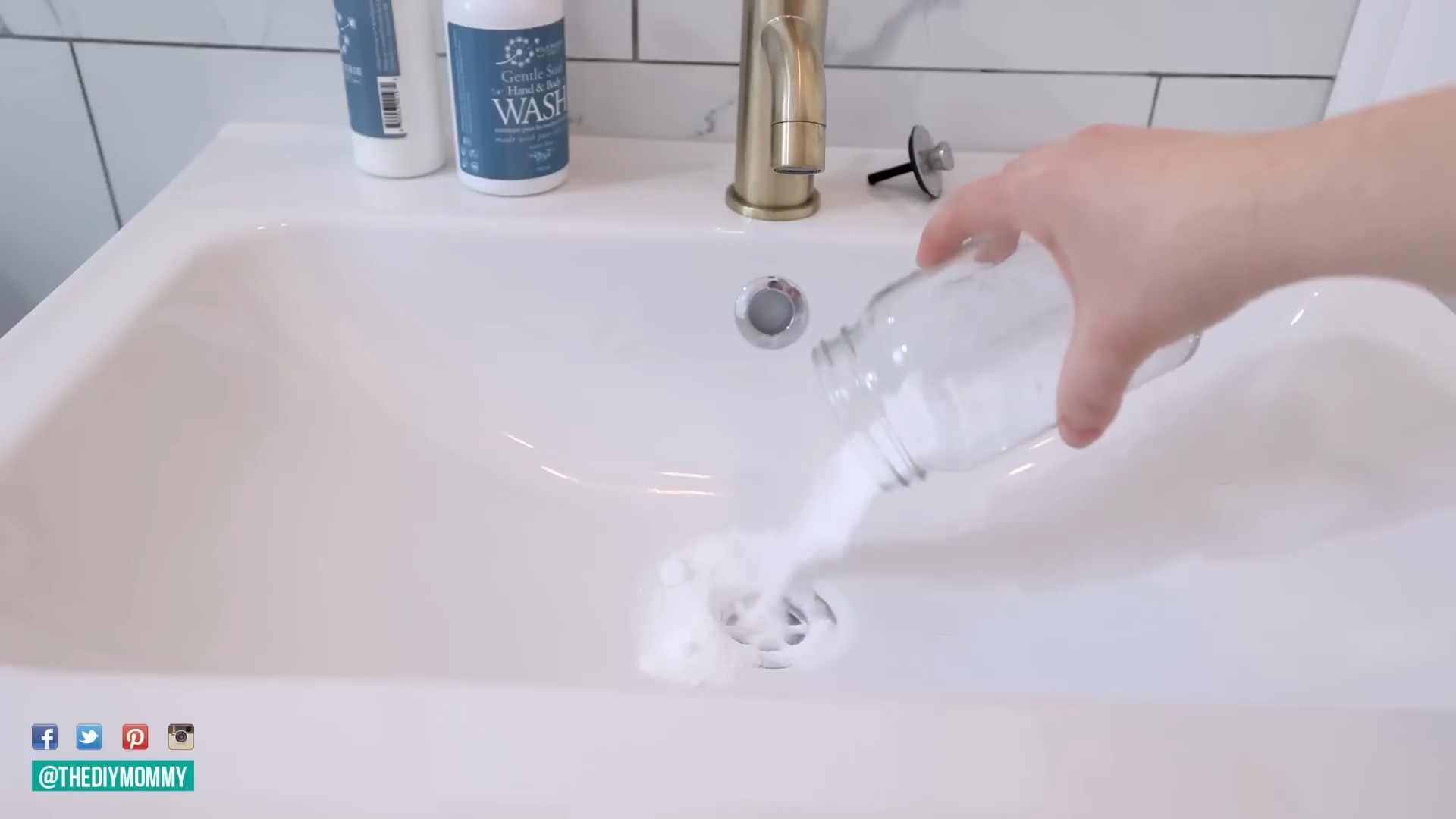
Conclusion
So, there you have it! These baking soda cleaning hacks are not just simple; they’re transformative. From tackling stubborn stains to deodorizing your entire home, baking soda proves itself to be a versatile and powerful cleaning agent. Forget harsh chemicals and expensive specialty cleaners. With a box of baking soda, you’re armed with a natural, effective, and budget-friendly solution for a multitude of cleaning challenges.
Why is this a must-try? Because it simplifies your cleaning routine, saves you money, and is better for the environment. You’re reducing your reliance on potentially harmful chemicals while achieving sparkling clean results. It’s a win-win!
Looking for variations? Try adding a few drops of your favorite essential oil to your baking soda paste for a fresh, natural scent. Lavender, lemon, or tea tree oil are excellent choices. For extra scrubbing power on tough stains, mix baking soda with a little salt. And don’t forget the power of baking soda and vinegar! While you shouldn’t mix them in a closed container (hello, volcano!), using them sequentially – baking soda first, followed by vinegar – can create a powerful fizzing action that loosens grime and dirt. You can also use baking soda to clean your dishwasher and washing machine by running an empty cycle with a cup of baking soda. This will help to deodorize and freshen up your appliances.
We’ve covered a lot of ground, from cleaning your oven to brightening your laundry. But the possibilities with baking soda are truly endless. Experiment, explore, and discover new ways to incorporate this amazing ingredient into your cleaning routine.
Now it’s your turn! We wholeheartedly encourage you to try these **baking soda cleaning hacks** and see the difference for yourself. You’ll be amazed at how effective and easy they are. Don’t be afraid to get creative and adapt these tips to your specific needs.
Most importantly, we want to hear about your experience! Share your before-and-after photos, your favorite baking soda cleaning tips, and any variations you’ve discovered in the comments below. Let’s create a community of baking soda enthusiasts and share our knowledge to make cleaning easier and more sustainable for everyone. What are you waiting for? Grab that box of baking soda and get cleaning!
Frequently Asked Questions (FAQs)
What exactly makes baking soda such a good cleaner?
Baking soda, or sodium bicarbonate, is a mild alkali. This means it can react with acids to neutralize them, which is why it’s so effective at removing odors and dissolving grease. Its slightly abrasive texture also makes it a gentle but effective scrubbing agent, perfect for removing stains without scratching surfaces. Furthermore, it’s a natural and non-toxic substance, making it a safer alternative to many harsh chemical cleaners. The chemical formula NaHCO3 allows it to react with both acids and bases, making it a versatile cleaning agent.
Is baking soda safe to use on all surfaces?
While baking soda is generally safe, it’s always a good idea to test it on an inconspicuous area first, especially on delicate surfaces like polished wood or certain types of stone. Avoid using it on aluminum, as it can cause discoloration. For gold plated items, it is best to avoid baking soda as it can scratch the surface. For most surfaces, however, baking soda is a gentle and effective cleaning option. When in doubt, dilute the baking soda with water to create a less abrasive solution.
Can I mix baking soda with other cleaning products?
While baking soda is a powerful cleaner on its own, it’s important to be cautious when mixing it with other cleaning products. Avoid mixing baking soda with acidic cleaners like vinegar in a closed container, as this can create a buildup of carbon dioxide gas, potentially leading to an explosion. While using them sequentially can be effective, never combine them in a sealed space. Mixing baking soda with bleach is also a dangerous combination that can produce toxic fumes. Always use baking soda on its own or with water, soap, or essential oils for safe and effective cleaning.
How do I store baking soda properly?
To maintain its effectiveness, store baking soda in an airtight container in a cool, dry place. This will prevent it from absorbing moisture and odors from the surrounding environment. If you’re using baking soda to absorb odors in your refrigerator or freezer, replace it every three months for optimal results. You can also store baking soda in its original box, but make sure to seal it tightly after each use.
What’s the best way to remove baking soda residue after cleaning?
After cleaning with baking soda, simply wipe the surface with a damp cloth or sponge to remove any residue. For stubborn residue, you can use a solution of water and vinegar to help dissolve it. Make sure to dry the surface thoroughly after cleaning to prevent water spots. A microfiber cloth works well for removing residue and leaving a streak-free finish.
How can I use baking soda to deodorize my refrigerator?
Place an open box of baking soda in your refrigerator to absorb odors. Replace the box every three months for optimal results. You can also sprinkle baking soda on a damp sponge and wipe down the interior surfaces of your refrigerator to remove spills and odors. For particularly stubborn odors, leave a bowl of baking soda in the refrigerator overnight.
Can baking soda help with laundry stains?
Yes! Baking soda is a great laundry booster and stain remover. Add a half cup of baking soda to your washing machine along with your regular detergent to boost its cleaning power and brighten your clothes. For tough stains, make a paste of baking soda and water and apply it directly to the stain before washing. Baking soda can also help to deodorize your laundry and remove musty smells.
Is baking soda safe for septic systems?
Yes, baking soda is generally considered safe for septic systems. It’s a natural substance that won’t harm the beneficial bacteria in your septic tank. In fact, baking soda can even help to balance the pH levels in your septic system, promoting healthy bacterial activity. However, it’s always a good idea to consult with a septic system professional if you have any concerns.
How can I use baking soda to clean my oven?
Make a paste of baking soda and water and spread it all over the inside of your oven, avoiding the heating elements. Let the paste sit overnight. The next day, wipe away the paste with a damp cloth or sponge. For stubborn grime, you can use a plastic scraper to help remove it. This method is a natural and effective way to clean your oven without harsh chemicals.
What are some other creative uses for baking soda besides cleaning?
Beyond cleaning, baking soda has a wide range of uses. It can be used as a natural antacid to relieve heartburn, as a toothpaste to whiten teeth, as a deodorant to absorb body odor, and as a bath soak to soothe skin irritations. It can also be used in baking to help leaven baked goods. The possibilities are endless!


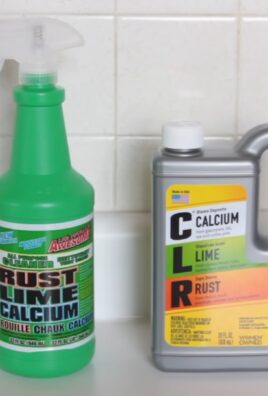
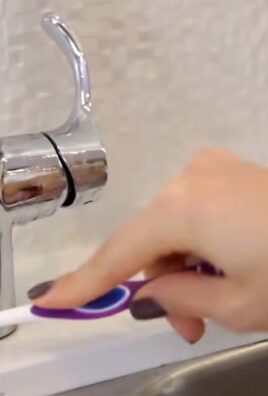
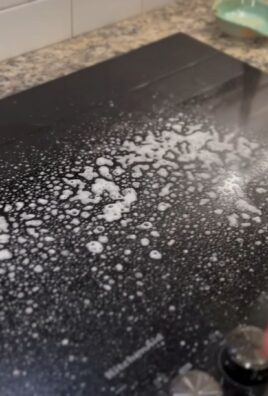
Leave a Comment